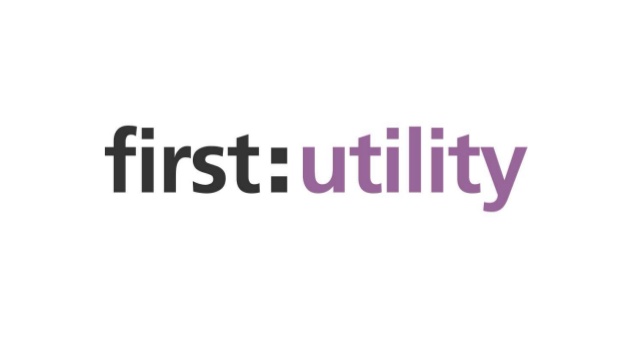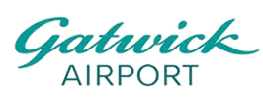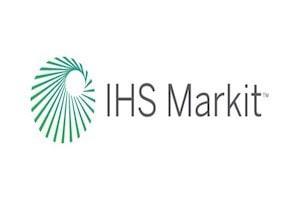Here at Sirius, we often get asked, "Who are the Best in Class SIEM and XDR platforms, and How Does Wazuh Compare?" This is a very good question, and one that deserves a clear, honest answer. We understand that buyers are obsessed with reviews and rankings and naturally research multiple options before making a major technology decision.
We want to be upfront: Wazuh is positioned as a powerful Open Source security platform that provides unified Extended Detection and Response (XDR) and Security Information and Event Management (SIEM) capabilities at zero licensing cost. However, the choice between Wazuh and commercial leaders involves a strategic assessment of financial and operational trade-offs. Organizations must choose between the Predictable High Cost/Turnkey Efficacy model favored by commercial XDR leaders (where Total Cost of Ownership or TCO is dominated by licensing fees and data ingestion volumes) or the Low Marginal Cost/High Labor Investment model represented by highly flexible Open Source solutions like Wazuh.
This article will transparently compare the leading SIEM and XDR platforms against modern security imperatives, explaining these critical trade-offs and allowing you to make the most informed decision possible. We aim to be fiercely transparent.
I. Defining "Best in Class": TDIR Velocity
The evaluation of "Best in Class" SIEM and XDR solutions is no longer based merely on log aggregation or compliance reporting. Modern security evaluation is predicated on operational velocity, specifically the capability of a platform to leverage unified telemetry and advanced analytics to dramatically reduce critical security metrics such as Mean Time To Detect (MTTD) and Mean Time To Respond (MTTR).
1. The Market Shift: SIEM to XDR Convergence
The security market is defined by a clear convergence toward unified Security Analytics Platforms (SAP).
Traditional SIEM Mandate: Legacy SIEM platforms (e.g., LogRhythm, IBM QRadar) were primarily developed for log aggregation, correlation, alerting, and mandatory compliance/reporting.
XDR Evolution: Extended Detection and Response (XDR) represents the architectural response to SIEM limitations. XDR expands data collection beyond traditional logs to include high-fidelity telemetry from endpoints, networks, and cloud environments. The primary goal of XDR is to accelerate detection and response by correlating events across multiple security layers, often using machine learning (ML) and behavioral analysis to identify sophisticated, unknown threats.
Market Segments: The XDR market is segmented into Native XDR (single vendor, tightly integrated proprietary portfolio, e.g., CrowdStrike Falcon, SentinelOne) and Hybrid/Open XDR (ingests and correlates data from third-party tools, e.g., Wazuh, Elastic Security). Native XDR offers superior correlation fidelity and speed but risks vendor lock-in.
II. The Core Strategic Trade-Off: Cost vs. Labor Investment
Platform selection requires choosing between two divergent financial models that fundamentally allocate Total Cost of Ownership (TCO) differently.
| Model Priority | Wazuh (Open Source) | Commercial Leaders (e.g., Splunk, SentinelOne) | Key Financial Differentiator |
|---|---|---|---|
| Licensing | $0 licensing cost for the core platform. | High; determined by data volume (Splunk), endpoints (SentinelOne), or subscription tier (Sentinel). | Commercial solutions penalize visibility due to data ingestion costs. |
| TCO Structure | TCO dominated by specialized labor, expertise, and infrastructure management (OpEx). | TCO dominated by high, often unpredictable, licensing fees. | Open Source converts large Capital Expenditure (CapEx) into substantial OpEx. |
| Operational Risk | High Risk: Reliance on specialized internal expertise/staff turnover; complex patching/upgrades. | Moderate Risk: Data Ingestion Spikes (Log Volume Eruptions). | Self-managed Wazuh requires mandatory, continuous engineering effort. |
The greatest financial error in evaluating Open Source solutions is equating the zero licensing cost with a zero-cost operation. To achieve enterprise-grade security hardening and maintenance using Wazuh, substantial internal specialized engineering expertise is mandatory. Organizations engaging in paid commercial services for the Wazuh ecosystem exhibit a median annual expenditure of $16,234 for specialized support alone.
III. Comparing Functional Strengths and Detection Efficacy
The "Best in Class" platform for an organization depends on whether they prioritize customizable, compliance-driven host security (Wazuh) or high-fidelity, AI-powered threat efficacy (Commercial XDR).
1. Compliance and Host Security: Wazuh’s Advantage
Wazuh retains a native focus on endpoint security, offering superior control for compliance needs.
Native Capabilities: Wazuh natively integrates File Integrity Monitoring (FIM) and Security Configuration Assessment (SCA) capabilities. SCA continuously monitors systems against security policies like CIS benchmarks to maintain IT hygiene. FIM natively logs the specific users and applications responsible for file changes, providing a fundamental defense layer.
Compliance Support: Wazuh actively supports compliance with major standards, including PCI DSS, HIPAA, GDPR, and NIST 800-53. This capability simplifies regulatory fulfillment and offers a significant competitive advantage for compliance-driven organizations.
Traditional SIEM Deficiency: Traditional proprietary SIEMs typically require external modules or third-party tools to replicate this level of granular FIM, increasing implementation complexity and cost.
2. Detection and Response Automation
Commercial XDR platforms leverage advanced proprietary methods to accelerate detection and response, minimizing MTTR risk.
| Feature | Wazuh (Open Source) | Commercial Leaders (e.g., CrowdStrike, SentinelOne) | Operational Implication |
|---|---|---|---|
| Detection Efficacy | Good (Rule-based behavioral analysis; requires specialized internal labor for tuning). | Excellent (Native, proprietary AI/ML for UEBA and anomaly detection). | Proprietary XDR platforms like CrowdStrike outperform Wazuh in real-time detection (9.6 vs. 8.5). |
| Incident Response | Script-based Active Response (automated actions defined by user scripts). | Natively integrated SOAR (Security Orchestration, Automation, and Response). | Wazuh places the entire burden of validating and maintaining complex orchestration workflows on the organization’s engineers. Commercial SOAR offers pre-validated, low-friction playbooks. |
| MITRE ATT&CK | Integrates with the framework and provides context mapping. | Frequently validated through independent MITRE ATT&CK evaluations; demonstrates high detection efficacy. | Quantitative performance measurement is the standard for modern TDIR value. |
3. Commercial Leader Differentiators
Commercial solutions often provide out-of-the-box maturity that Open Source requires labor to build.
Microsoft Sentinel: Excels for organizations invested in Azure, offering native XDR integration, built-in SOAR, and integrated Security Copilot (GenAI) for AI-guided investigation.
SentinelOne/CrowdStrike (Native XDR): Recognized for their AI-powered platforms and unified agent architecture, they consistently achieve high efficacy results in detecting emergent threats. These systems leverage proprietary AI to reduce the False Positive Rate and combat alert fatigue.
Wazuh's Trade-off: Wazuh lacks the native, pre-tuned proprietary AI/ML algorithms found in commercial competitors, making its advanced detection capabilities reliant on the user’s specialized configuration of the underlying OpenSearch stack.
IV. Strategic Conclusion and Ideal Platform Selection
The "Best in Class" platform is the one that minimizes TCO while maximizing the organization's unique security priorities, whether that be reducing operational friction or maintaining architectural control.
1. When Wazuh is the Best Fit
Wazuh is the optimal choice when customization, compliance control, and architectural independence are paramount.
Cost-Controlled/Engineering-Rich Organizations: Enterprises with mature, dedicated security engineering teams can assume the operational burden to capitalize on the $0 licensing cost and eliminate data ingestion fees. This maximizes visibility without incurring external licensing volatility.
Compliance is the Core Mandate: Organizations requiring rigorous technical adherence to standards like PCI DSS or HIPAA benefit from Wazuh’s native FIM and SCA tools and customizable compliance reporting.
Managed Service Affordability: Smaller enterprises prioritizing budget stability and Cost Predictability can use the agent-based Wazuh Cloud service (Small Tier starting at $571 per month for 100 agents) to outsource infrastructural complexity, thereby achieving a demonstrable TCO reduction.
2. When Commercial Alternatives Offer Superior Value
Commercial platforms provide superior value when efficiency, guaranteed support, and detection efficacy outweigh the benefits of customization.
Maturity-Focused Enterprises (Prioritizing TDIR Velocity): Organizations where minimizing MTTR and achieving rapid, high-fidelity response is paramount should select a Native XDR platform (e.g., SentinelOne, CrowdStrike). These platforms offer ML-driven detection and seamless response actions, which are critical for tackling sophisticated, unknown threats.
Cloud-Centric Enterprises: Organizations heavily invested in specific cloud ecosystems (e.g., Azure) should leverage converged platforms like Microsoft Sentinel for superior, cost-effective integration within their existing cloud framework.
Mandatory High-Availability Support: Enterprises requiring strict 24/7 vendor support with guaranteed SLAs (e.g., a four-hour response SLA for critical issues) should utilize the official Premium support tiers offered by commercial vendors, as opposed to the community-supported Open Source model.
















































